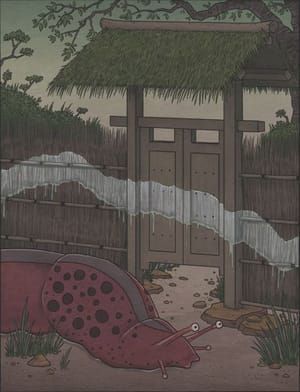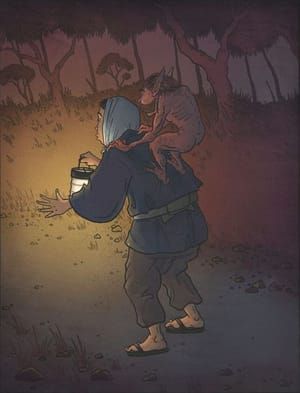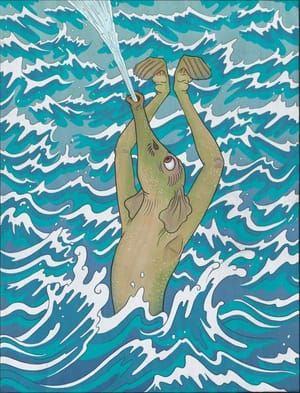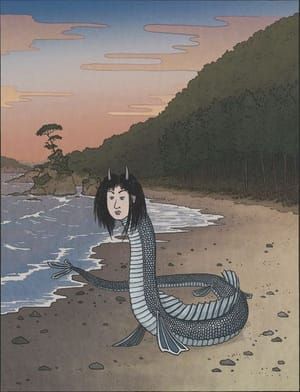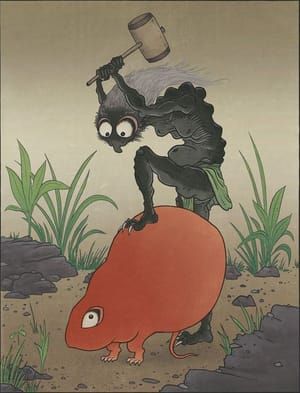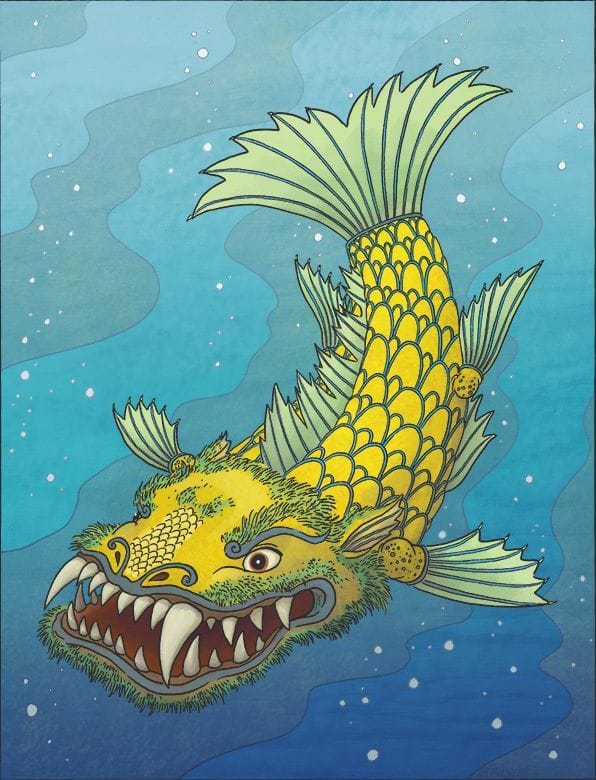

Shachihoko, 2017
Matthew Meyer
鯱
Shachihoko are fearsome sea monsters. They have the body of a large fish and the head of a tiger. Their broad fins and tails always point towards the heavens, and their dorsal fins have numerous sharp spikes. Shachihoko live in colder, norther oceans. They are able to swallow massive amounts of water with a single gulp and hold it in their bellies. They are also able to summon clouds and control the rain.
Shachihoko are often found adorning the rooftops of Japanese castles, temples, gates, and samurai residences. They are placed facing each other on opposite ends of a roof. They serve as protector spirits, similar to the oni roof tiles also commonly found on castles. It was believed that in the event of a fire, the shachihoko could protect the building by summoning rain clouds or by spitting out the massive amounts of water they had previously swallowed.
Shachihoko as an element of construction evolved from shibi, large, ornamental roof end tiles. Shibi originated in China during the Jin dynasty and were popularized in Japan during the Nara and Heian periods. During the Sengoku period, when castles rapidly began appearing all over Japan, shibi were reimagined as large fish, and the image of the shachihoko was popularized. From them on, shachihoko remained popular elements of Japanese roof construction.
The shachihoko’s origins may go even further back, to India. In Hindu mythology, there is a large sea monster named Makara who is half-fish and half-beast (sometimes depicted as an elephant, a deer, a crocodile, or another animal). Makara was a powerful protector and servant of various deities. Images of Makara were commonly used in temple architecture, particularly over archways and doorways, or as rain spouts. Japanese versions of Makara tend to resemble the shachihoko more than they resemble the original Hindu creature.
Today, the Japanese word for the orca is shachi—no doubt because of its similarity to this creature.
Matthew Meyer
artistArthur
Wait what?

